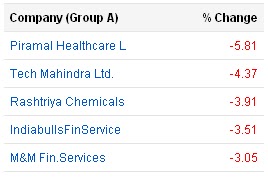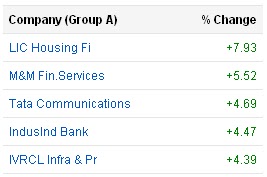The Indian telecom market is the second largest in the world after China. However a decade ago we were at the bottom of the pyramid in terms of subscriber figures. Today India is the world’s fastest growing telecom market. All of this has been possible by the policies framed by the government which allowed private companies to enter telecom market. The success of these private players has been phenomenal and they have left their public counterparts far behind.
AirTel, the largest Indian telecom company crossed the 200 million subscriber mark in the third quarter of 2011. The combined figure for both wireless and wireline subscribers stood at 806.13 million as on 31st January 2011, out of which wireline contributed 34.94 million subscribers and wireless contributed 771.18 million subscribers.
The telecom market of late has seen intense competition with many new entrants like Uninor, Videocon etc.
Let us look back at what reforms have shaped this sector over the last 20 years.
The government opened the telecom sector in its New Economic Policy 1991. Following this telecom equipment manufacturing was de-licensed and value added services were opened up for the private sector. This opened up the cellular mobile services to the private sector. By framing the New Telecom Policy 1994 the government clearly announced its intention of liberalizing the sector.
New Telecom Policy 1994
Teledensity in India at that time was extremely low at .8 per 100 persons compared to the world average of 10. The main objectives of this policy were telecommunication for all and telecommunication within the reach of all. Telephone should be available on demand by 1997. All villages should be covered in the telecom network by 1997. Value added services available in International markets should be available in India too. The policy also aimed at making India an exporter of telecom equipment.
When this policy was framed there were only three incumbents in the market, the DoT, VSNL and MTNL. DoT had a pan India presence except in Delhi and Mumbai and was the policy making authority. MTNL was present in Delhi and Mumbai and VSNL provided international telephony. It was apparent that the DoT with its vast presence was a formidable competitor for any private player. Hence to create a level playing field the government decided to split up the DoT into two divisions, one policy maker and the other service provider. The service providing arm was later corporatized as BSNL. The DoT’s role was now limited to policy making only.
TRAI
The entry of private players gave rise to need of an independent regulator. With this view in mind the government set up the Telecom Regulatory Authority of India. TRAI’s mission is to create and nurture an environment of growth in the sector.
In 2000 the government passed an amendment to the TRAI act and created the Telecom Dispute Settlement and Appellate Tribunal (TDSAT) to take over all the adjudicatory and disputes from TRAI.
The New Telecom Policy 1999
The government in 1999 reframed the telecom policy to address the prevailing issues and to restore faith in the investment environment.
Under this policy it was sought to, strengthen the regulator and open National & International long distance to private players.
With this policy all sectors in telecom were opened up to the private sector.
Broadband Policy 2004
Realizing the potential of broadband services in a growing economy and the improvement in quality of life that it can bring through various services like tele-education, tele-medicine etc, the government declared the broadband policy in 2004.
Through this policy broadband services using various technologies like ADSL, Wi Fi and Wi-Max were de-licensed. Broadband penetration in India stands at a dismal low figure of 10.7 million (2011) compared to the government target of 20 million by 2010. More needs to be done in this field to increase penetration of broadband services.
Foreign Direct Investment Policy
In Basic, Cellular Mobile, Paging and Value Added Service, and Global Mobile Personal Communications by Satellite, Composite FDI permitted is 74% (49% under automatic route) subject to grant of license from Department of Telecommunications subject to security and license conditions
FDI up to 74% (49% under automatic route) is also permitted for Radio Paging Service, Internet Service Providers (ISP's),
FDI up to 100% permitted in respect of the following telecom services, Infrastructure Providers providing dark fiber (IP Category I), Electronic Mail, and Voice Mail.
Future scope
The next phase of growth definitely lies in the rural areas. TRAI and DoT have made rural penetration an important target. But the low density in rural areas makes it a less attractive prospect for private players. Policy changes need to be initiated. Government should consider giving Tax breaks to attract private companies to rural areas.
On the broadband front some long term thinking is certainly needed. Technology needed for this service is expensive and generally imported. Duties can be reduced so that it’s less expensive for players to procure the technology and then they can pass on these benefits to the end user in terms of lower charges.
Consolidation is the buzz word. The market can’t sustain the current number of players. Competition has eroded the average revenue per user; the ARPU figures have been showing a downward trend in recent years. Government needs to frame policies for this purpose soon.
New Telecom Policy
The 2G scam has forced the ministry to get into the clean up act and it has realized the need to amend to 11 year old telecom policy. The new policy will determine the direction that the sector takes.
Last 2 decades of reforms have established telecom as one of the fastest growing sector of our economy. But the recent rough patch that the sector has witnessed has reduced investor confidence.Its clear that the government needs to initiate new reforms so that investor confidence can be restored and the sector can witness a new phase of growth.











